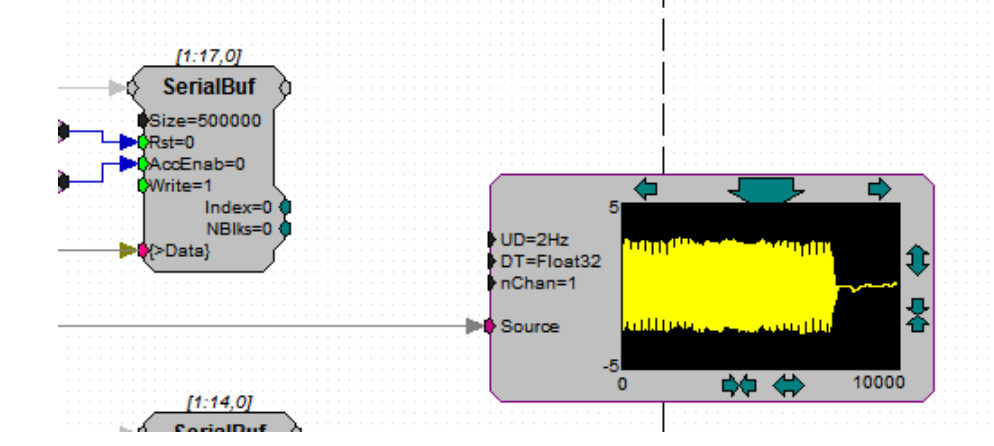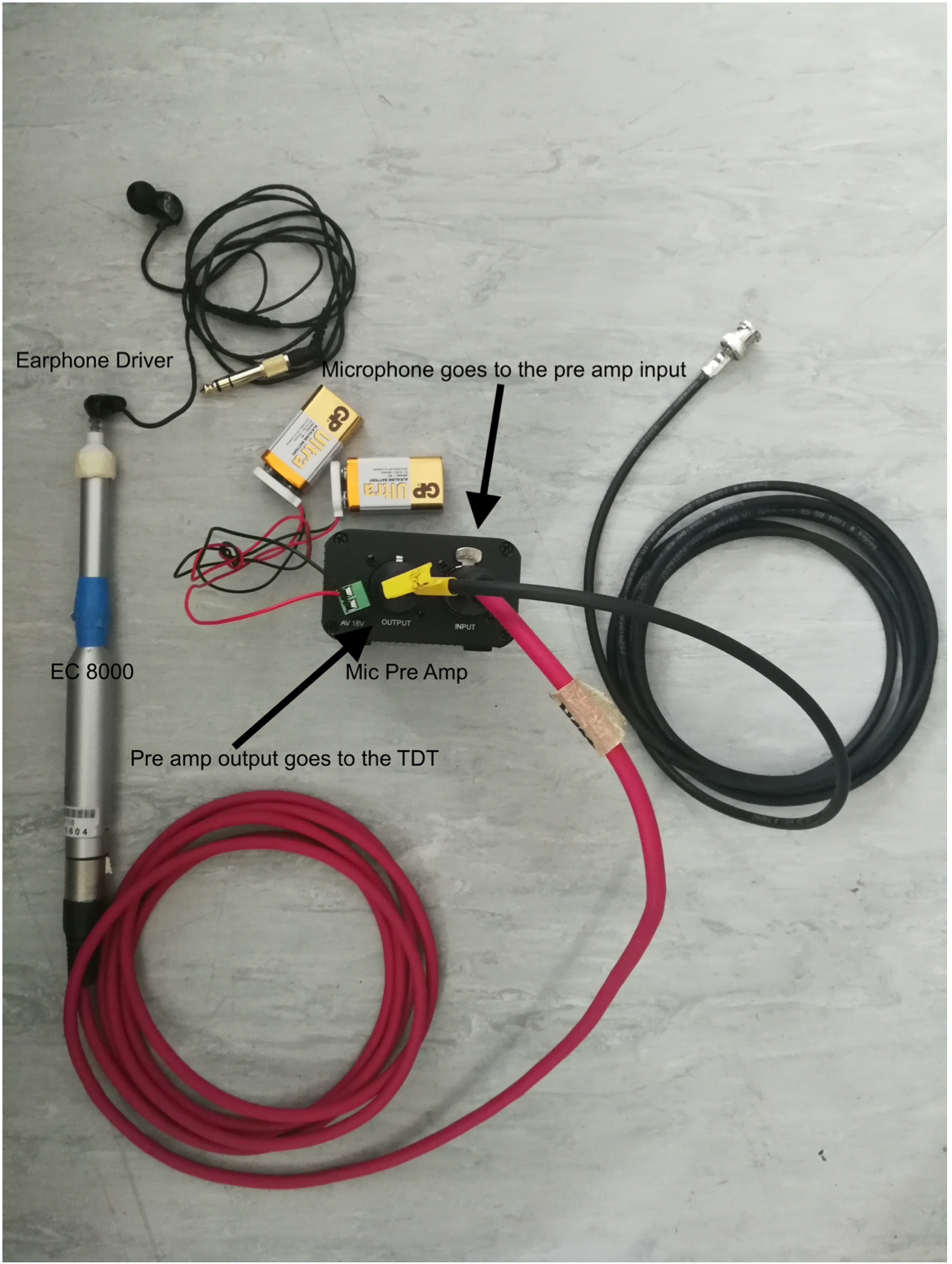Very roughly estimating dB SPL for an example tone.
Played the tones continuously through the MOTU soundcard.
Earphones connected to Behringer calibrated reference mic.
Output of mic preamp into RZ6 (set gain such that you see signal on the first 2 LEDs). RZ6 input gain amplifier was set to 55 dB in our case.
|
DB Gain |
Peak amp |
|
55 |
2.7 |
|
45 |
0.8 |
|
35 |
0.25 |
These values tell me that the dB gain on the front panel of the RZ6 work according to 20*log10(x/y) because 20*log10(2.7/0.8)=10.56
Fired up RZ6record.rcx and hit zBus trigger A until we get a nice snap of the tone in the little scope window.

This looks to me like a peak amplitude of ~2.7 V. Note that for rough dB SPL values, this does not need to be super precise.
Step 1: go from peak amplitude to RMS amplitude.
For Sine waves: RMS amp = peak Amp / sqrt(2).
So, the recorded voltage had a RMS amp of 2.7/sqrt(2)= 1.91 V
Step 2: take out amplifier gain.
We recorded 1.91 V RMS at a gain of 55 dB. That means the microphone gave us a unamplified voltage of 55=20*log10(1.91/x), solve for x.
x= 1.91/10^(55/20) = 0.0034 V RMS.
Step 3: use known microphone sensitivity to convert microphone Voltage to sound pressure in Pascal.
We used Behringer ECM8000 mic with known sensitivity of 11mV/Pa => RMS sound pressure of the tone was 3.4 mV / (11 mv/Pa) = 0.3091 Pa
Step 4: convert RMS pascal to RMS SPL:
By international convention, dB SPL are given by 20*log10(x/ 20micropascal) Therefore, the tone has a dB SPL of 20*log10( 0.3091/0.00002) = 83.8 dB SPL


